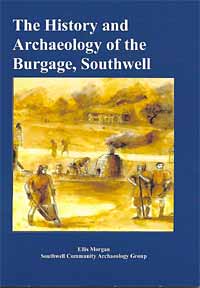Book reviews, Autumn 2022
‘Surveying the Domesday Book’ by Simon Keith
ISBN 978-1-91442-710-7 | Published by Windgather Press (www.windgatherpress.co.uk)
Simon Keith is a Chartered Surveyor, and this analysis of the Domesday Book is from the perspective of a surveyor and valuer. Its main aim was to calculate a timetable for the creation of the Domesday survey. Simon has analysed the text and he has used ‘reverse engineering’to determine the survey’s purpose, what data was collected, the volume of it and how it was used. This book sets out to calculate a timetable of the creation of the Domesday book. It is a very innovative analysis and a fascinating read. The 7 chapters are: ‘A surveyors perspective’; ‘Why was the Domesday survey undertaken’; ‘What does Domesday record’; ‘Valuation’; ‘The Boroughs’; ‘The Logistics’; and a chapter of ‘Conclusions’.
There are also 7 Appendices, a Bibliography and a complete Index. The book creates and calculates the timetable of the Domesday survey from completely different viewpoint and I found it a compelling read. I presented an innovative analysis, arguing the viewpoint that it represents a revaluation of the hindage assessment system which was never used to collect tax directly. Simon Keith proposes that while the document was an outstanding administrative success as a survey, it was a total fiscal failure. As a Geographer who since University in the 1960s has always been interested in Historical Geography, I found this book fascinating. It gave me a completely new perspective on the Domesday Book.
The History and Archaeology of the Burgage, Southwell by Ellis Morgan
ISBN: 9781916100305 | Published for Southwell Community Archaeology Group

This book written by Ellis Morgan would not have taken place without the support of the Southwell Community Archaeology Group, who worked on researching the history and archaeological exploration of the Burgage. In 1677 in the first country history of Nottinghamshire, Dr Robert Thoroton, described Southwell as being “divided into the Burgage ... and the Prebendage.” The Prebendage comprising of the heart of the town dominated by the Minster and the surrounding grand prebendal mansions. The Burgage was a small manor which remained under the direct lordship of the Archbishop of York. The first chapter in this book on the introduction to the Burgage and early Southwell, gives the reader a historical tour from the Iron Age, through Roman, Anglo Scandivanian, and early Norman Southwell, while Chapter 2 on the Mediaeval Burgage goes further and through wonderful illustrations, maps and archaelogical findings, how the growth of Southwell took place. The evidence from Burgage Manor of town expansion, the field systems in the manor, the development to the North, South, East and West of the green is recorded. This allows the reader a very detailed view of how the medieval Burgage developed. Wonderful illustrations really help the reader in showing how the Burgage developed.
Chapter 3 is titled 14th century crisis and slow recovery. Here we see evidence of climate change as the colder and wetter conditions resulted in the disastrous harvests in 1315. With epidemics decimating cattle and sheep stocks in 1320 and the Black Death in 1348, population decline and the abandonment of plots lead to waste tips and abandonment. With archaelogical findings and other evidence, this chapter continues to look at the Poor end of town, and looking at recent evidence from diggings on the Green.
Chapter 4 gives a full development of Southwell as a Georgian town extending into the Burgage, and the residents of Burgage Manor House. With the development of other grand houses built in the 18th and 19th century this chapter is a very well researched growth of Southwell. In Chapter 5 there is a full description f Inns, Inmates and Industry on the Burgage in18th and 19th century. The photographs throughout the book as shown in Chapters 4,5 and 6 and the other illustrations and maps really do make this book such a clear historical document that allows the reader so much information The final two chapters on Events on the Green and the Conclusion just conclude this very informative book on the Burbage , Southwell and how it survives today as a space enjoyed by generations of townsfolk. With a full Bibliography and References this book is a wonderful historical and archaelogical record of the Burgage of Southwell. To discover more I suggest you purchase this wonderful book by contacting: southwellarchaeology.org.uk. I recently had a very interesting day with the book and a copy of the map on the inside front cover of the book which is the key to many locations in Southwell which include the word ‘Burgage’ in their names.
Paul Baker